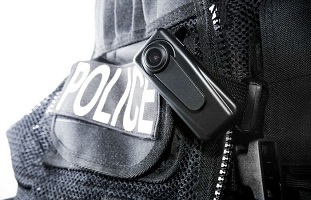With the addition of 1,000 new Axon cameras, Cincinnati became the first city in America to roll out police body cameras with live-streaming capabilities. The system is designed to allow dispatchers or commanders to view an emergency situation on police body cameras in real time, or locate an officer who has become lost or hurt during the incident. According to Axon, which is the largest supplier of police body cams in the U.S., the system will be activated when it detects a gun has been drawn, a gunshot is heard or a Taser is turned on.
The cameras will record in 1080p and be equipped with software that allows officers to obtain transcripts of the audio in the footage, Axon officials told The Washington Post. The company is storing the immense amount of footage in a computing cloud maintained by Axon and Microsoft.
Axon has confirmed that the cameras will not have facial recognition capabilities, but will have “face detection” software that will allow officers to skip to parts of the video where people are present. Cincinnati Police plan to limit who has access to the live streaming capabilities and where the footage is stored.
“To have the ability to access that camera in real time, and live-stream what the officer is seeing, that’s amazing,” Lt. Stephen Saunders of the Cincinnati police department told the Post. “That will be a tactical advantage in high-stress situations like an active shooter, or maybe the officer can’t get to their radio. The dispatch center can access it and see what’s going on there. That’s a game-changer.”
Privacy advocates and security researchers say that the addition of live streaming adds more transparency in how police do their jobs as well as opportunities for potential over-surveillance of residents. Barry Friedman, a New York University law professor, who serves on Axon’s AI Ethics Board, said that the new technology has “pluses and minuses.”








